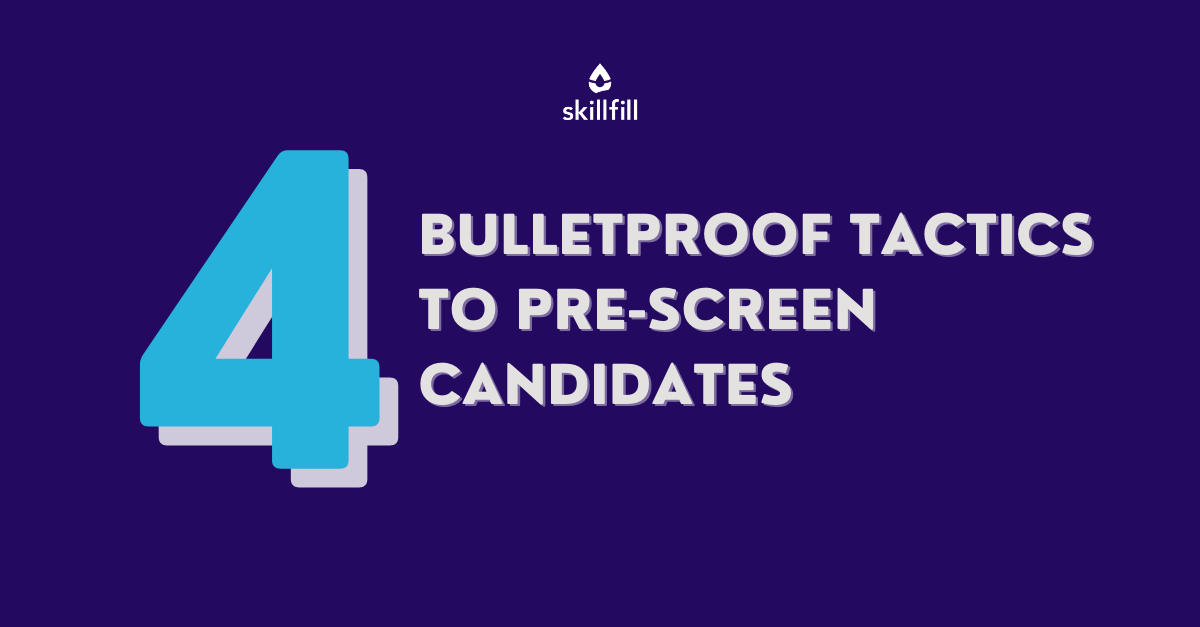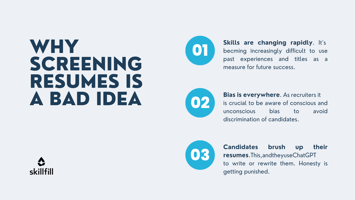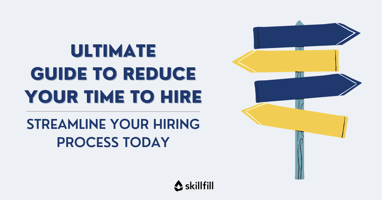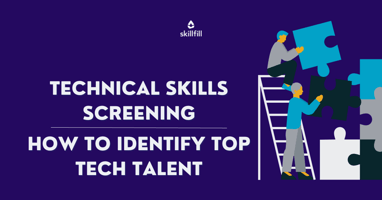The World Economic Forum paints a dramatic picture and shows how work life is changing. In their...
4 Bulletproof Tactics to Pre-screen Candidates
Hiring new tech talent for your team is always exciting. It translates into a new opportunity to talk with exciting people, to understand how the labor market is reacting to new job openings, and to open the doors to a brand new colleague! 🎉
However, an exciting moment like this one is not free of challenges. Nowadays searching and finding top tech talent can be a difficult task, due to the lack of qualified workers and the high competition of other companies looking to hire amazing people. That is why it is so important to keep your hiring process efficient, fast, and fun!
To ensure we help you close the best candidates, we share with you 4 bulletproof tactics to pre-screen candidates! 🔎

Why should you optimize your pre-screening process?
The pre-screening process is when you review all the received applications and do an initial filter to decide who moves forward to the first stage of the recruitment process.
What happens if your pre-screening process is not so good? Your whole recruitment process starts on the wrong feet and you might not be able to identify the top applicants, that is why it is so important to properly review efficiently every candidate. Old-fashioned tools such as CV screening are not able to tell you the most important aspect of them all: does the candidate have enough skills to do the job? Nowadays, with new technologies and systems quickly emerging, degrees and previous experiences are not solid indicators of job performance.
To make sure you start your recruitment process in the best way and not let any top talent slip through your fingers, let's dive into the 4 tactics to pre-screen candidates!
4 Bulletproof Tactics to Pre-screen Candidates
1. Don't ask for a cover letter
We are starting with a bold statement, I know! But even though Cover Letters are a famous tool, it does not mean they are a good one.
According to Forbes, around 46% of jobseekers are using ChatGPT to write their resumes or cover letters. This only means that the cover letter is telling recruiters what they want to know in order to keep the candidates in the recruitment process, instead of really informing about the candidate's profile and skills.
2. Ask qualifying questions during the application
Since using a cover letter (or CVs) is not a good way to understand job performance, you might be starting to think about how to check for the applicants' skills. One good option besides skill assessments (that we will focus on right after this point) is to ask certain questions at the moment candidates are submitting the application. Simple questions tailored to the position you are looking to hire are great to get an initial idea of the profile of the candidate.
If you are looking to hire Machine Learning Engineers or want to assess skills such as problem-solving, deep learning, statistics, or neural networks, check this list of 22 questions to hire the best ML candidates.
3. Implement skill assessments
If you are not using skill assessments in your pre-screening process, let me tell you something... you are missing out on BIG TIME! Skill assessments, also known as skill tests or even pre-employment tests, allow you and your organization to assess the skills of your candidates in an easy and quick way. By implementing skill assessments, you let candidates prove to you that they have what it takes to do the job, and you can make hiring decisions better informed.
Since it brings automation to your pre-screening process, you will be able to cut the time spent checking if the candidate has the necessary skills, and use it to focus on what really matters: the person behind the application. If you want to know more about skill assessments, check this out.
4. Avoid 1 on 1 interviews
Don't get us wrong, 1:1 interviews are great! But not at this stage of your recruitment process. When you are looking to understand if the candidates possess the skills for the job and do an initial filtering, spending around 30 minutes with each applicant is an inefficient approach. It will translate into a long and time demanding process for both you and the candidates, which is not the best idea when you are looking to deliver a great candidate experience.
Additionally, 1:1 interviews early in the process can bring unconscious bias and negatively affect the outcome of your pre-screening process. If you really want to include interviews in your pre-screening process, include at least 2 people from your organization and debrief after the call to ensure everyone shares their opinion about the candidates, in an attempt to reduce unconscious bias.
Conclusion
There are plenty of ways and tactics to pre-screen candidates. And it all depends on the company you are working with and the type of positions you want to fill. At skillfill.ai, we are huge fans of skill assessments, since they are the best predictor of job performance, they help avoid unconscious bias, and save so much time. Our platform allows you to generate skill assessments automatically, tailored to your specific job requirements - more unique than this is pretty much impossible!
I hope these 4 bulletproof tactics to pre-screen candidates are useful to you and that you are delivering top-notch candidate experiences!
ASSESS TECH TALENT BEYOND CVs
Start today your 14-day free-trial and identify the best tech talent to join your team.



